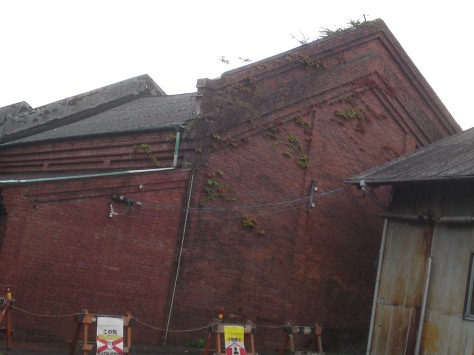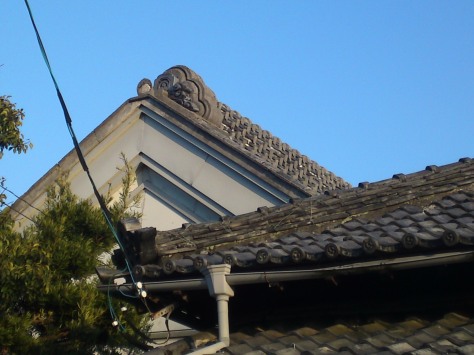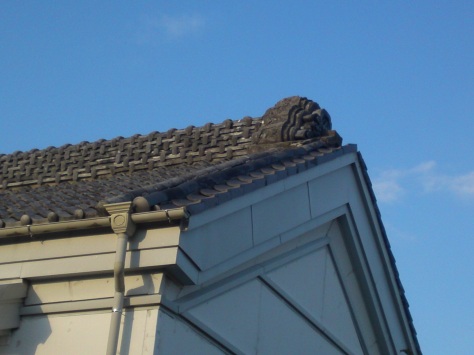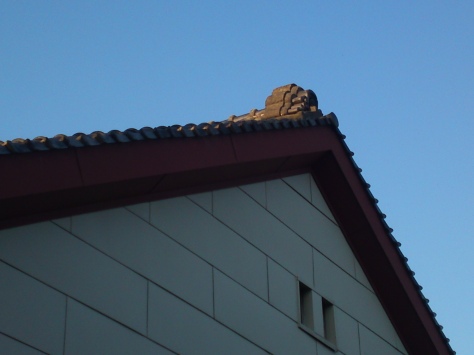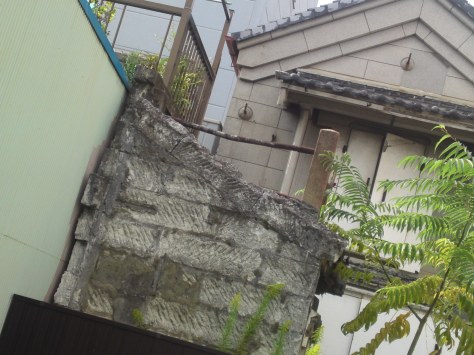“Kura” (in Japanese 蔵 or 倉) means “warehouse” or “Storehouse”.
In traditional Japan, especially during the Edo Era, as most of buildings and urba/village structures were made of wood, fires were the bane of society by and large.
However well-protected a fire would consume a house or buildings and all its properties within minutes.
Hence a special building or warehouse was needed to protect goods and properties against such a catastrophe.
But erecting a storehouse solely made of concrete, stones and some metal cost a vast amount of silver and gold and only rich merchants and nobility could afford them. Even castles could not be built entirely of stone then.
The other having some time on my hands I decided to cycle down to Ikeda in Suruga Ku, south of Shizuoka JR Station to look for a kura that had just been introduced to me by my good friend, Philip Kreiner.
It is an old Buddhist Temple dating back to 1307 during the Kamakura Era.
The monk there kindly explained me that the kura had been built in the 2nd Year of Meiji Era (1869) after a great fire destroyed the biggest part of the Temple to preserve precious documents although nowadays it is used only as a shed.
Although comparatively small it looked different from the usual kura built by rich merchants or high officials.
It had an unusual portico at its entrance with typical Buddhist Temple decoration.
It even bore its own mon/Japanese crest!
it was in excellent repair in spite of the large smudges caused by rain running down the roofed portico.
The alignment pegs were in a very straight line proving that the building was not suffering from any warping!
Old but very solid window panels and awning!
That door seemed very solid, too!
It was open on both sides for better draft.
Well-maintained tiled roof pinion!
Well-maintained and grilled openings to let the water flow under the building!
Walking around the building…
Well-maintained on any side!
Interesting discovery, all in all!
RECOMMENDED RELATED WEBSITES
So Good Sushi Restaurant in Nice France
Navigating Nagoya by Paige, Shop with Intent by Debbie, BULA KANA in Fiji, Kraemer’s Culinary blog by Frank Kraemer in New York,Tokyo Food File by Robbie Swinnerton, Green Tea Club by Satoshi Nihonyanagi in Shizuoka!, Mind Some by Tina in Taiwan, Le Manger by Camille Oger (French), The Indian Tourist, Masala Herb by Helene Dsouza in Goa, India, Mummy I Can Cook! by Shu Han in London, Pie
rre.Cuisine, Francescannotwrite, My White Kitchen, Foodhoe, Chucks Eats, Things that Fizz & Stuff, Five Euro Food by Charles,Red Shallot Kitchen by Priscilla,With a Glass, Nami | Just One Cookbook, Peach Farm Studio, Clumsyfingers by Xethia, PepperBento, Hapabento, Kitchen Cow, Lunch In A Box, Susan at Arkonlite, Vegan Lunch Box; Tokyo Tom Baker, Daily Food Porn/Osaka, Only Nature Food Porn, Happy Little Bento, J-Mama’s Kitchen, Cook, Eat, Play, Repeat, Bento Lunch Blog (German), Adventures In Bento, Anna The Red’s Bento Factory, Ohayo Bento,
Must-see tasting websites:
-Sake: Ichi For The Michi by Rebekah Wilson-Lye in Tokyo, Tokyo Through The Drinking Glass, Tokyo Foodcast, Urban Sake, Sake World
-Wine: Palate To Pen, Warren Bobrow, Cellar Tours, Ancient Fire Wines Blog
-Beer: Another Pint, Please!, Beering In Good Mind: All about Craft Beer in Kansai by Nevitt Reagan!
ABRACADABREW, Magical Craftbeer from Japan
-Whisky: Nonjatta: All about whisky in Japan by Stefan Van Eycken
-Japanese Pottery to enjoy your favourite drinks: Yellin Yakimono Gallery
Non gastronomy must-see sites by Shizuoka Residents
HIGHOCTANE/HAIOKU by Nick Itoh in Shizuoka City













































































































